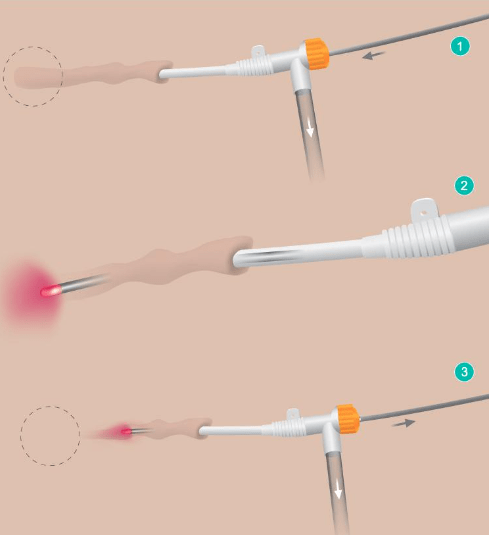LASER VENOUS ABLATION
What is Laser Venous Ablation?
Laser venous ablation is a minimally invasive procedure designed to close off abnormal veins using laser energy. This treatment is particularly effective for addressing chronic venous disease, which can manifest as leg pain, swelling, fatigue, and varicose veins when long veins in the leg, such as the great saphenous vein, are affected.
How Does Laser Venous Ablation Work?
During laser venous ablation, the laser ablation system delivers energy to heat up the inside lining of the vein. This process essentially destroys the vein, rendering it non-functional. As a result, the vein collapses, alleviating downstream pressure on the leg and varicose veins.

Laser Venous Procedure Overview
1. Ultrasound Guidance
Before the procedure begins, the physician conducts a careful ultrasound scan of the leg to identify a suitable insertion point for the laser.
2. Numbing the Area
Once the insertion point is identified, the skin is numbed using a local anesthetic delivered through a small needle.
3. Insertion of Sheath and Laser Fiber
A larger needle, similar to the size used for inserting a large IV, known as a sheath, is inserted into the vein. This sheath serves as an entry portal for the laser fiber. With the sheath in place, the laser fiber is carefully inserted into the vein under ultrasound guidance to ensure precise positioning.
4. Tumescence Fluid Injection
Before activating the laser, the physician injects tumescence fluid around the vein. This fluid acts as insulation, protecting surrounding leg tissue from thermal injury caused by the laser energy. It also helps to enhance patient comfort during the procedure.
5. Activation of Laser and Vein Sealing
Once the tumescence fluid is injected, the laser is activated inside the vein, initiating the sealing process. The laser probe is slowly pulled back along the length of the vein, effectively sealing it off.

Laser Endovenous Ablation.
The laser probe is inserted into the vein and pulled back gradually until all affected areas are treated.
Recovery from Laser Venous Ablation
Recovering from laser venous ablation is typically swift and straightforward. Here’s what you can expect:
Immediate Mobility
You can get up and walk immediately after the procedure. There’s no need for extended bed rest or immobilization.
Activity Restrictions
While you’ll be asked to avoid strenuous activities for a few days, such as heavy lifting or intense exercise, you’re encouraged to engage in light activities like walking several times daily. This helps prevent unwanted complications and promotes healing.
Minimal Disruption
Since laser ablation is performed through a needle puncture, there’s no need for prolonged recovery time. You won’t require narcotics for pain management, and there’s minimal interruption to your work schedule. Many patients are able to resume their normal activities shortly after the procedure.
Your Experienced Vascular Team

Robert Ballard, MD

Alexander Tretinyak, MD

Sarah Wilson, MD

Jason Le, MD

Ariel Stilp, APNP